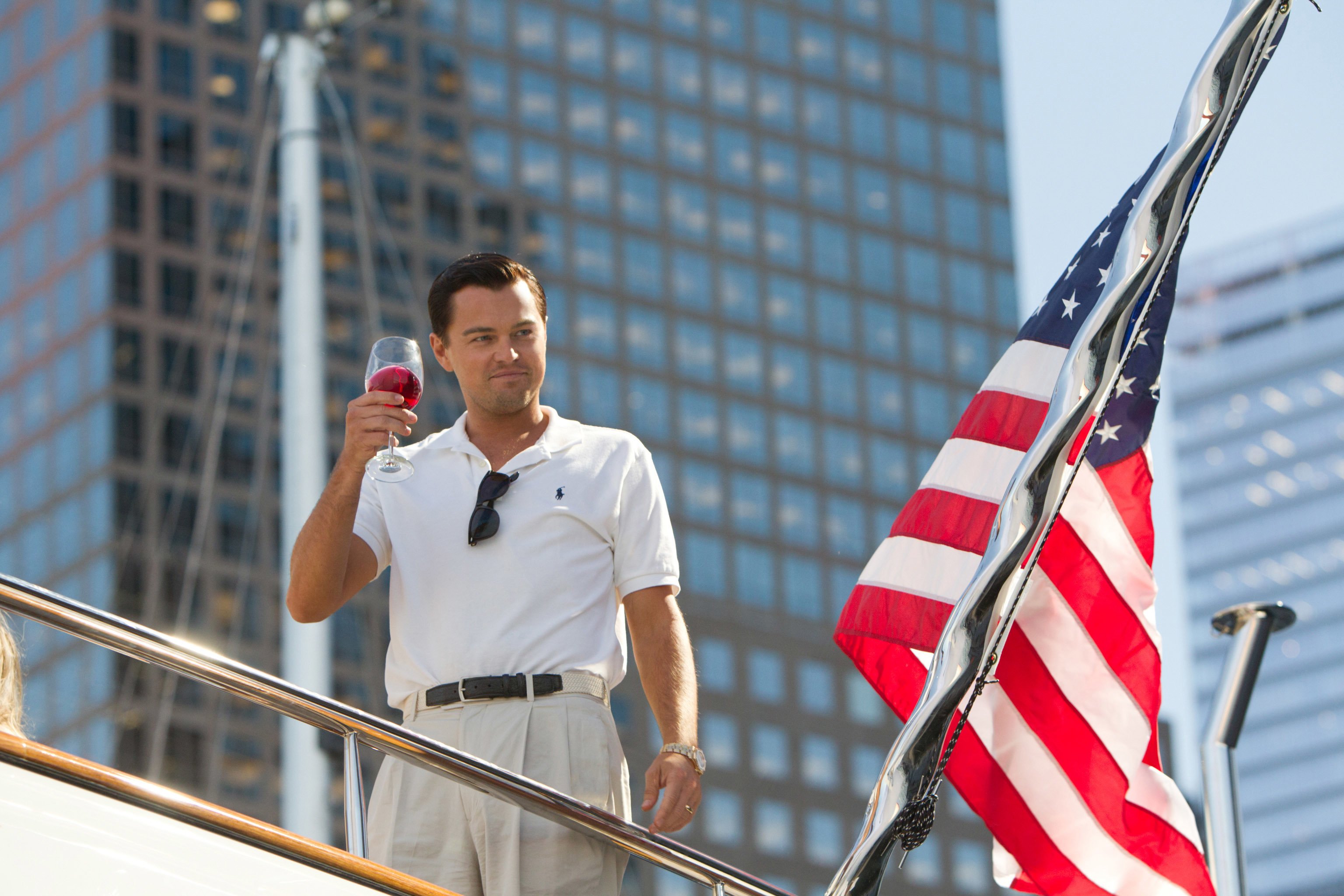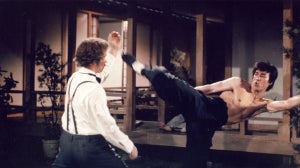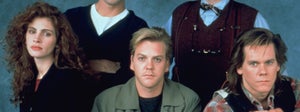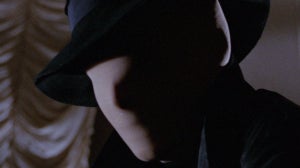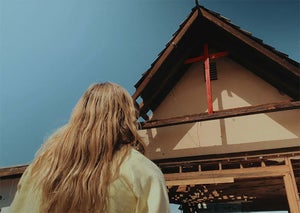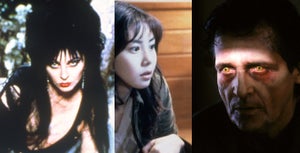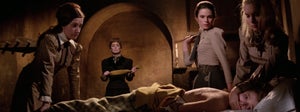
“Questions, answers, loss of the answer again and more questions, and this is what really interests me. Yes, the cinema and the people in my life and my family are most important, but ultimately as you get older, there's got to be more.” – Martin Scorsese at Cannes in 2013
Since he won the Best Director and Best Picture Oscars for 2006’s The Departed, Martin Scorsese has made six narrative films, a body of work that reflects an artist searching for meaning in the world, his life, and his work. Whether he’s unpacking why we make movies in a film like Hugo, the limits of faith in a film like Silence, or the violent origin story of this country in Killers of the Flower Moon, these six films are undeniably the work of an older, experienced artist, a man who has so little left to prove that he can use his talent to interrogate the world around him. Cinema will always have the Scorsese masterpieces that shaped the form like Taxi Driver, Raging Bull, and GoodFellas, but these late-career films represent one of the most fascinating collections by an artist in movie history, an array of creative works that ask nothing less than what it means to be human.
It's interesting that the six films are so obviously personal to Martin Scorsese, given that all of them are based on novels. It’s evidence of how the art one chooses to elevate can reflect the interests of the adapting artist as much as the original writer, maybe more. Take the first film that Scorsese made after The Departed, 2010’s Shutter Island, adapted from the novel by Dennis Lehane. On the surface, this story feels right in the wheelhouse of a man who admires classic thriller cinema, a cousin of Cape Fear. But there’s also a deep undercurrent of regret in the story of a man so traumatized by what he’s seen that he chooses a medical procedure to leave it all behind.
The Reality Bender
Shutter Island reunited Scorsese with his new muse for the fourth time, casting Leonardo DiCaprio as Teddy Daniels, a U.S. Marshal investigating the disappearance of a patient from the titular high-security medical facility. With a visual language that’s terrifyingly fraught from the very beginning, Scorsese, cinematographer Robert Richardson, and editor Thelma Schoonmaker make viewers feel as fractured as the protagonist until it’s revealed that Teddy was actually a patient at Shutter Island. Scorsese’s artistry is on display throughout, including one of his most memorable uses of classical music by everyone from Gustav Mahler to Max Richter, but it’s where Shutter Island lands narratively that makes it feel like the prologue to this late-career search for meaning in Scorsese’s work.
In the final scenes of Shutter Island, it’s revealed that Teddy’s wife, Dolores (Michelle Williams), drowned their three children before Teddy shot her. He has repressed not just this memory but his whole present-day reality, a repression amplified by the horrors that Teddy saw in World War II. Following Shutter Island, Scorsese is asking about the cost of forgetting. If we forget the value of faith in Silence, the value of family in The Irishman, the value of human life in Killers of the Flower Moon, where does that leave us?
https://www.youtube.com/watch?v=v8yrZSkKxTA
The Family Fable
Almost as an emotional counterbalance to Shutter Island, Scorsese followed that thriller up with arguably his lightest film, the family fable Hugo, based on a book by Brian Selznick and released only a year later. It’s not a coincidence that Scorsese looked at his peers using the form of 3D to tell stories and chose a book that’s basically about how and why people make movies in the first place to do the same. The result was one of his most beloved works, a movie that was nominated for 11 Academy Awards, winning more than any 2011 picture with five trophies.
Hugo Cabret (Asa Butterfield) lives alone in the Gare Montparnasse train station in Paris in 1931, an orphan who searching for a heart-shaped key to power up an automaton that his father (Jude Law) worked on before he died. His adventures lead him into the world of Isabelle (Chloë Grace Moretz), discovering that her godfather is none other than George Méliès, one of the real-world pioneers of the cinematic form. Scorsese told Lesley Stahl on 60 Minutes that Méliès was “actually a magician.” He continues, “He invented everything, basically, he invented it all.” Hugo is an artist aware that he is nearing the end of his output, returning to the beginning, paying homage to an underrated forefather, and finding his own creative passion in one of the originators. He’s asking why we make movies and how we remember the pioneers of our industry. If we can forget someone as vital as Melies, who else will history leave behind?
https://www.youtube.com/watch?v=nZGyAx7YyYM
The Pursuit of Success
They couldn’t be more different but the same creative passion shines through in every frame of one of Scorsese’s most vibrant and unforgettable motion pictures, 2013’s The Wolf of Wall Street. At first, this one may feel like the outlier in Scorsese’s quest for meaning, but there’s way more here than meets the eye. Once again, Scorsese is telling a true story. Once again, he’s adapting a hit book. And, once again, he’s interested in the kind of social structure that allows a predator like Jordan Belfort to define the terms of success and happiness. Art often questions what people are willing to do in the pursuit of perceived success—Jordan Belfort is willing to do anything.
The Wolf of Wall Street reunites Scorsese with DiCaprio, who gives arguably his career-best performance as Belfort, a New York stockbroker who became the poster boy for greed, excess, and fraud as the corporate world collapsed in the 2000s. Once again, Scorsese is asking questions. If all the privilege, money, and excess in the world can’t ever satisfy a man like Jordan Belfort, then does any of it really matter? It’s one of the most fascinating dualities in film history that such a beloved filmmaker followed a film about such rampant extreme behavior with a movie that centers people who have nothing but that in which they believe with Silence. Viewing the two films as a pair amplifies how much Wolf does fit in this quest for meaning—it’s a study of how all the toys in the world can still leave a man as hollow as Jordan Belfort.
https://www.youtube.com/watch?v=89KDQIZV6wI
The Unshakeable Value of Faith
Three years later, Martin Scorsese delivered one of his most unforgettable dramas in his long-delayed adaptation of Shūsaku Endō’s 1966 novel Silence. A fearless study of the unshakeable value of faith, Scorsese had been trying to make Silence for two decades, although it feels sometimes like art comes along at the right time for the artist, and Silence fits perfectly as the centerpiece of this late-career quest for meaning for the filmmaker. Leaving his regular collaborators like DiCaprio behind for a cast of talents with whom he had not worked, like Andrew Garfield, Adam Driver, and Liam Neeson, Silence can be seen as an echo of The Last Temptation of Christ and Kundun, films in which Scorsese questions the limits and value of faith.
Garfield stars as Sebastião Rodrigues, who is assigned with Francisco Garupe (Driver) to find a missing Portuguese Jesuit priest named Cristóvão Ferreira (Neeson), who has been captured by Japanese inquisitors. Silence is one of Scorsese’s most relentless, violent films, a story of a man faced with the ultimate questions of belief when not only his personal safety is threatened but those of other believers. Rodrigues hears the voice of Jesus, which allows him to recant his faith in order to save others, but the key to Silence is in its final scenes, in which Rodrigues dies with a crucifix in his hand, revealing the meaning Scorsese finds in trusting God. Raised deeply Catholic, he has always carried faith with him, even through the stories of evil men he has cinematically unpacked. He has always had his own personal religious item near his heart.
https://www.youtube.com/watch?v=IqrgxZLd_gE
The Mob
Scorsese’s fifth film since The Departed, not including docs, is one of his best, and a film quite directly about a man looking back at how his decisions have shaped his life. In adapting Charles Brandt’s I Heard You Paint Houses, Scorsese made what is likely his last mob movie, an epic that is primarily a look at the formation of America with its allegedly true revelations about how the mafia and labor movement in this country shaped each other, and the entire political landscape in the process. However, like everything in these late-career films, there’s a sense of Scorsese himself questioning his life and career in the heartfelt, underrated performance by Robert De Niro as Frank Sheeran, a man who wonders early in the film how German soldiers could be forced to dig their own graves and then thematically does exactly that for the rest of the story.
https://www.youtube.com/watch?v=iojhqm0JTW4
The Reunion
The Irishman reunited Scorsese with De Niro for the ninth time but the first feature collaboration in 24 years (since Casino). As if he knew a final statement on the mob, this momentous needed more of the all-stars of the genre, Scorsese also basically brought Joe Pesci out of retirement for the Oscar winner to play crime boss Russell Bufalino. And in the role of Jimmy Hoffa, he cast Al Pacino, an icon of the era in which Scorsese became a household name whom he had somehow never worked with.
A Netflix original film, The Irishman became a target for mockery because of some admittedly dodgy de-aging effects and the director’s longest-running time. History will look past those elements to a film that pulses with top-notch craftsmanship and lands its final beats with the force of a punch. In the end, when Frank has “painted all the houses” he can paint, his daughter (Anna Paquin) turns away from him, giving Scorsese’s finale an emotional wallop that echoes differently than the murders and prison sentences that usually end his gangster films. Sometimes, it’s more punishing to grow old alone.
https://www.youtube.com/watch?v=WHXxVmeGQUc
The Riveting Epic
Finally, there’s a film that’s about nothing less than the formation of this country in 2023’s Killers of the Flower Moon. Adapting the book of the same name by David Grann, Scorsese, and co-writer Eric Roth reshape a non-fiction study of the formation of the F.B.I. into a tale of genocide against the indigenous people of America. Some people seemed surprised that Scorsese would be interested in this subject matter, but it is directly in line with his career, especially these late-era films about searching for meaning. How did the country get to the divisive place it’s in the 2020s? How did the violent men of other Scorsese films have the ego and privilege to do what they did? Because men like King Hale (De Niro) murdered those he deemed lesser for profit and control. Killers of the Flower Moon is a riveting epic, a study of the nonchalantly cruel nature of true evil, something that Scorsese has been fascinated by his entire career.
Lily Gladstone stars as Mollie Burkhart, a member of the Osage Nation in Oklahoma, a group that became the wealthiest in the country per capita after oil was discovered on their land. A regional cattle baron and power broker named William “King” Hale was the mastermind behind a series of murders to take the Osage land and the liquid money underneath it, often using his nephew Ernest (DiCaprio) to do his dirty work. After marrying Mollie, WWI veteran Ernest follows the orders of his uncle to commit atrocities, even poisoning his new wife. It’s a stark, brutal, ambitious study of the blood that fertilized the soil of this country and how murders like those of the Osage people have been reflected in other forms throughout history, including the Tulsa Massacre and the lynchings of the South.
https://www.youtube.com/watch?v=EP34Yoxs3FQ
Consider how these films work in conversation with each other. For example, take the bookends of Shutter Island and Killers of the Flower Moon, two violent epics about the kind of traumatic rifts that shift the landscape, like what Teddy saw in World War II or what the Osage suffered in the 1920s. Think about how and why he followed up his most excessive film, The Wolf of Wall Street, with a story of a man who needs no earthly possessions at all in Silence. Does the greed of Jordan Belfort exist without the murderous theft of men like William Hale? And how do men like Frank Sheeran connect them all?
Much has been made of the final scene of Killers of the Flower Moon, which includes Scorsese himself noting that Mollie Burkhart’s obituary made no mention of the crimes from which she barely escaped. In this beat, Scorsese is centering the idea of who told these stories in the past and who gets to tell what story next. He’s also putting a period on this entire late-career era of his work, at least for now. He’s asked these questions about greed, privilege, faith, and violence. Now it’s our turn to consider their answers.

Related Articles

